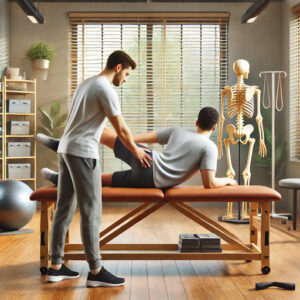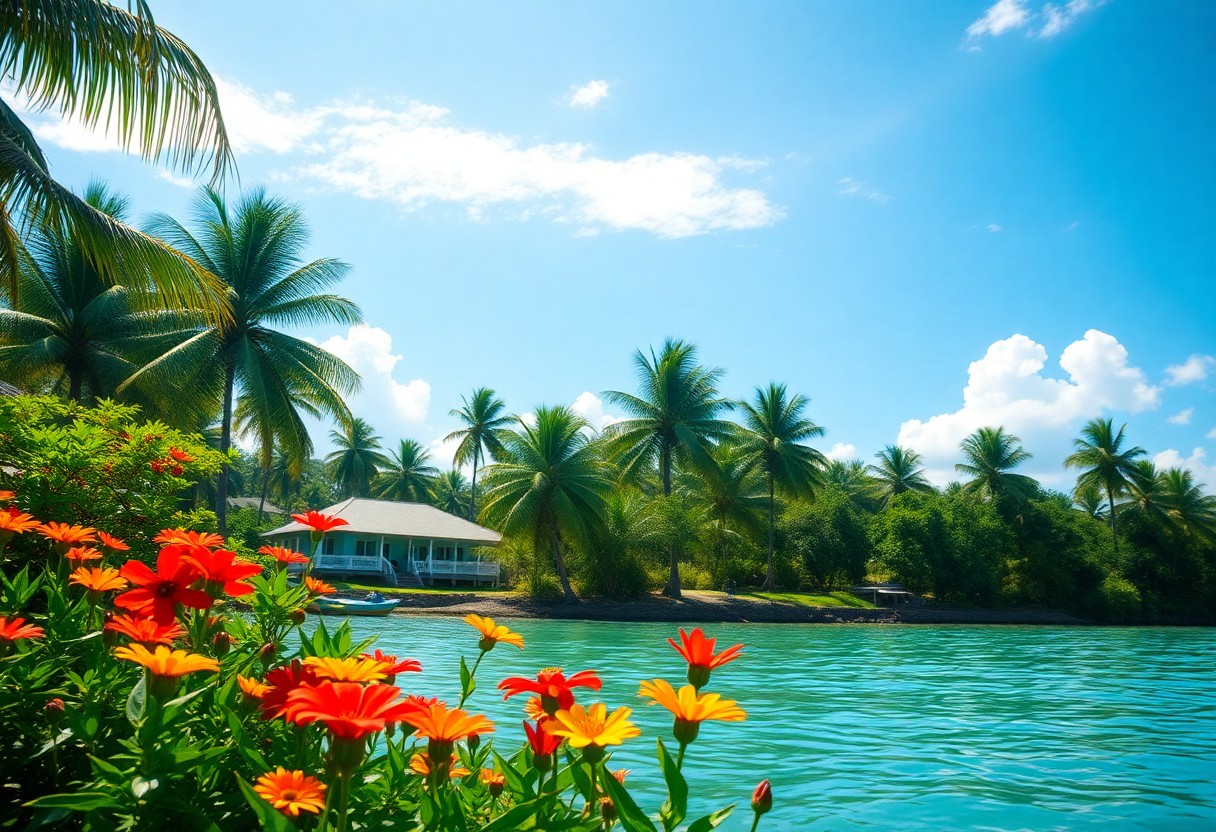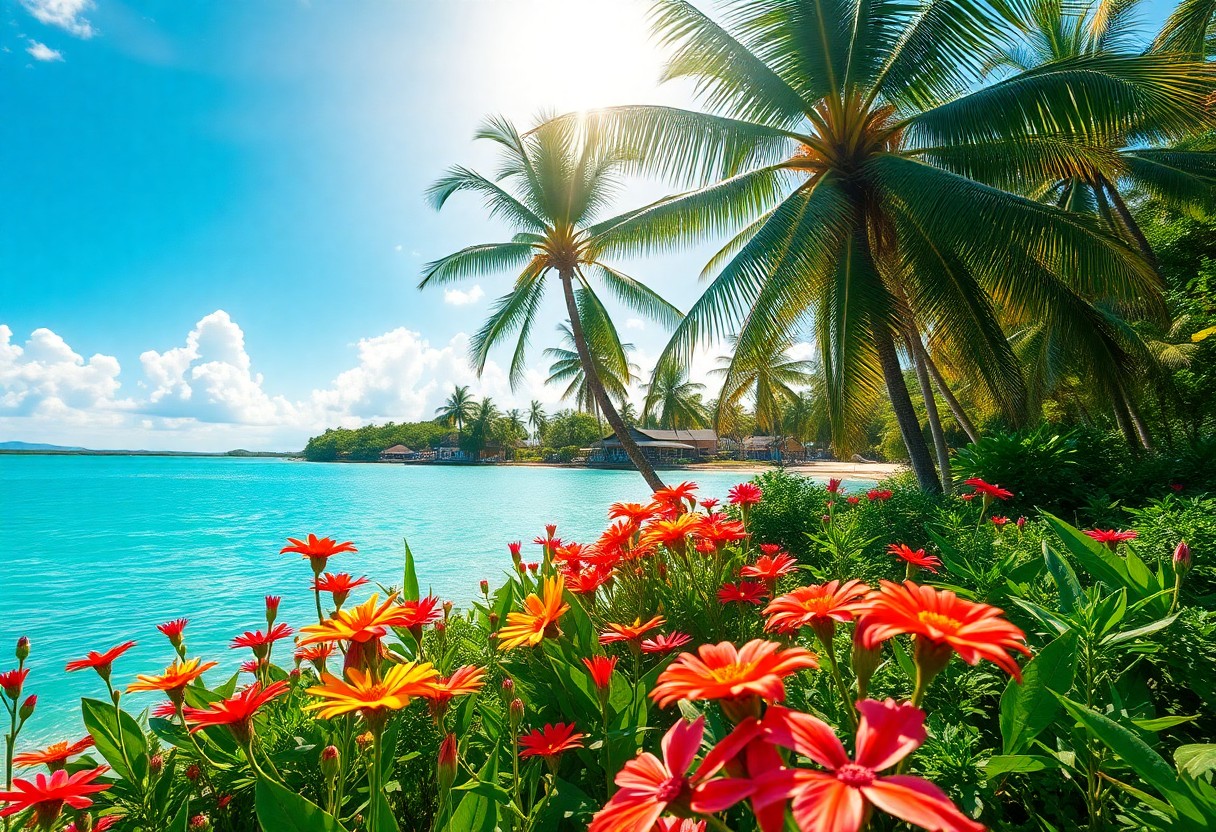Discover Powerful Non-Surgical Approaches to Alleviate Chronic Sciatica Discomfort
Chronic sciatica can greatly impact your overall quality of life, leading to persistent discomfort that disrupts daily activities and routines. This debilitating condition occurs when the sciatic nerve, which stretches from the lower back into the legs, becomes compressed or irritated. Common symptoms include ongoing pain, numbness, or weakness in the affected leg, making even simple tasks feel daunting. Gaining a deeper understanding of chronic sciatica is crucial for exploring effective pain relief techniques and management strategies tailored to individual needs, allowing for a more active and fulfilling lifestyle.
Identifying the root causes of chronic sciatica is essential in crafting personalized treatment plans. Key factors that commonly contribute to this condition include herniated discs, spinal stenosis, and degenerative disc disease. These medical conditions exert pressure on the sciatic nerve, leading to the troubling symptoms experienced by many individuals. By accurately diagnosing these underlying issues, patients can develop an effective management strategy that addresses the root causes, ultimately improving their quality of life and alleviating discomfort.
The severity and duration of pain associated with chronic sciatica can differ significantly among individuals. Some may experience a dull ache that persists over time, while others might suffer from sharp, radiating pain that hampers their ability to carry out everyday activities. Furthermore, the ongoing discomfort tied to chronic sciatica can induce emotional distress, negatively affecting mood and overall well-being, thus creating a challenging cycle of pain and emotional challenges. Recognizing these complexities is vital for implementing effective pain relief strategies.
Crucial Strategies for Effectively Alleviating Symptoms of Chronic Sciatica
- Chronic sciatica is a long-lasting condition marked by pain, tingling, and numbness affecting the lower back and legs.
- Participating in physical therapy can significantly enhance flexibility, strength, and mobility for individuals suffering from chronic sciatica.
- Medications, including nonsteroidal anti-inflammatory drugs (NSAIDs) and muscle relaxants, can effectively manage symptoms related to chronic sciatica.
- Alternative therapies like acupuncture, chiropractic care, and yoga may provide additional relief from chronic sciatica symptoms.
- If conservative treatments prove inadequate, surgical options such as discectomy or laminectomy may be considered for chronic sciatica patients.
 Maximizing the Benefits of Physical Therapy for Chronic Sciatic Pain Relief
Maximizing the Benefits of Physical Therapy for Chronic Sciatic Pain Relief
Unlocking the Potential of Physical Therapy in Your Chronic Sciatica Management Journey
Physical therapy plays an integral role in the effective management of chronic sciatica. Through a customized physical therapy program, individuals can specifically target and strengthen the muscles that support their spine, which ultimately enhances overall flexibility and strength. A qualified physical therapist will conduct a comprehensive assessment of the individual’s condition and create a tailored exercise regimen aimed at alleviating pressure on the sciatic nerve. This approach facilitates a more efficient recovery process and enhances overall physical function.
Essential Components of an Effective Physical Therapy Program for Sciatica Relief
An effective physical therapy program for sciatica typically includes targeted stretching and strengthening exercises that focus on the core, hips, and lower back. These exercises are meticulously designed to meet the unique needs of each patient, helping to relieve pressure on the sciatic nerve. In addition to exercise, physical therapy may also incorporate heat or cold treatments to reduce inflammation, further enhancing the effectiveness of the treatment plan and accelerating the recovery process.
Advanced Techniques in Physical Therapy for Accelerating Sciatica Recovery
Physical therapists can implement innovative techniques such as ultrasound therapy or electrical stimulation to promote healing in affected areas. These advanced approaches can significantly diminish inflammation, reduce pain, and encourage tissue repair. By integrating these cutting-edge techniques into a comprehensive physical therapy strategy, individuals are likely to experience improved outcomes and a more efficient recovery process, ultimately enhancing mobility and overall quality of life.
Long-Term Benefits of Committing to Physical Therapy for Sciatica Management
Consistently adhering to a physical therapy regimen empowers individuals to effectively manage chronic sciatica and prevent future flare-ups by enhancing their physical resilience. Regular participation in physical therapy can lead to improved overall body function, decreased pain levels, and a considerable enhancement in long-term health and well-being. This holistic approach allows individuals to enjoy a more active and satisfying lifestyle.
Assessing Medication Options for Effective Chronic Sciatica Pain Relief
While non-invasive treatments often serve as the primary approach, medications can play a vital role in alleviating the symptoms of chronic sciatica. Over-the-counter pain relievers, such as ibuprofen or acetaminophen, can offer temporary relief for those suffering from this condition. For individuals experiencing more intense pain, healthcare providers may prescribe stronger medications, including muscle relaxants or anti-inflammatory drugs, to help manage symptoms more effectively.
These medications function by reducing inflammation surrounding the sciatic nerve, thereby alleviating pain. In certain cases, corticosteroid injections may be recommended for immediate relief. These targeted injections deliver anti-inflammatory medications directly into the area surrounding the sciatic nerve, effectively diminishing swelling and providing significant pain relief.
Although medications can be an effective means of symptom management, it is crucial to use them thoughtfully and under the supervision of a healthcare professional to minimize potential side effects or the risk of dependency.
 Delving into Alternative Therapies: Holistic Approaches for Chronic Sciatica Relief
Delving into Alternative Therapies: Holistic Approaches for Chronic Sciatica Relief
Exploring alternative therapies for chronic sciatica can reveal additional pathways for relief that do not necessitate invasive procedures. A well-known option is acupuncture, which involves the insertion of fine needles into specific points on the body to stimulate healing and alleviate pain. Many individuals report significant improvements in their symptoms following acupuncture treatments, as this method effectively reduces nerve pain while promoting relaxation and emotional well-being.
Another alternative therapy is electrotherapy, which employs electrical impulses to stimulate nerves and muscles. This technique can boost blood circulation and diminish inflammation in the affected area, ultimately assisting in pain relief and enhancing mobility. Additionally, <a href=”https://limitsofstrategy.com/red-light-therapy-for-effective-knee-pain-relief/”>Light therapy</a> has gained traction for its ability to alleviate pain by applying specific wavelengths of light that penetrate the skin, fostering healing and comfort.
Cupping therapy is another intriguing alternative that involves placing cups on the skin to create suction. This practice is believed to enhance circulation and relieve muscle tension, potentially providing significant relief from sciatica symptoms. Additionally, massage therapy can deliver substantial relief by targeting tight muscles and promoting blood flow in the lower back and legs, which is crucial for managing pain and improving overall mobility.
Incorporating stretching into your daily routine can yield impactful benefits for sciatica relief. Engaging in gentle stretches that focus on the lower back, hips, and legs can help alleviate muscle tension surrounding the sciatic nerve. By maintaining flexibility and reducing tightness, individuals may experience enduring relief from chronic sciatica symptoms, ultimately enhancing their quality of life.
Considering Surgical Interventions for Chronic Sciatica Treatment
While many individuals achieve relief through non-invasive methods, surgical intervention may be necessary in certain instances of chronic sciatica where other treatments have proven ineffective.
If conservative treatments fail to provide adequate relief after several months, your healthcare provider may consider surgery as a viable option.
The most prevalent surgical procedure for sciatica is a discectomy, which involves the removal of a portion of a herniated disc that is pressing on the sciatic nerve, thereby alleviating pain and discomfort.
An alternative surgical option is spinal fusion, which aims to stabilize the spine by fusing two or more vertebrae. This method may be recommended when significant instability in the spine contributes to sciatica symptoms, providing a more stable structure to support nerve health and overall function.
While surgical interventions can effectively reduce pain and enhance mobility, it is essential to discuss the potential risks and benefits with your healthcare provider before proceeding.
 Adopting Lifestyle Changes for Effective Chronic Sciatica Management
Adopting Lifestyle Changes for Effective Chronic Sciatica Management
Integrating Consistent Exercise for Improved Sciatica Relief
Incorporating regular physical activity into your daily routine can significantly enhance your ability to manage chronic sciatica. Engaging in low-impact exercises such as walking, swimming, or cycling not only strengthens your back muscles but also boosts overall flexibility without placing excessive strain on your body. These activities not only promote physical health but also contribute to improved mood and mental well-being, which are crucial in alleviating the emotional burden often linked to chronic pain.
Maintaining a Balanced Weight and Staying Hydrated
Maintaining a healthy weight is pivotal for reducing pressure on your spine and the sciatic nerve. Excess weight can exacerbate various conditions that contribute to sciatica, making it essential to embrace a balanced diet rich in fruits, vegetables, whole grains, and lean proteins for optimal health and vitality. Staying properly hydrated is equally important, as adequate hydration supports healthy spinal discs and nerve function, which can significantly alleviate sciatica symptoms.
Practicing Excellent Posture to Enhance Spinal Health
Emphasizing good posture is another vital lifestyle change that can greatly benefit individuals coping with chronic sciatica. Being mindful of your sitting, standing, and lifting techniques can help prevent unnecessary strain on your back and minimize the risk of worsening your symptoms. Utilizing ergonomic furniture and supportive seating options can also significantly aid in maintaining proper spinal alignment throughout the day, ultimately leading to a more comfortable and pain-free experience.
Implementing Home Strategies to Effectively Manage Chronic Sciatica Symptoms
Successfully managing chronic sciatica at home involves various strategies aimed at enhancing comfort and alleviating pain. One highly effective method is the application of heat or cold packs to the affected area. Heat therapy can relax tight muscles and improve blood circulation, while cold therapy can reduce inflammation and numb sharp pain sensations, providing a comprehensive approach to pain management.
Experimenting with both heat and cold treatments will help you determine which method offers the most relief in your specific case. Incorporating gentle stretching exercises into your daily routine can also significantly alleviate sciatica symptoms at home. Simple stretches targeting the lower back and legs can relieve tension and enhance flexibility, making daily tasks more manageable.
Engaging in yoga or Pilates can yield additional benefits; both practices emphasize core strength and flexibility while promoting relaxation, which can be particularly advantageous for those experiencing chronic pain. Moreover, creating a comfortable sleeping environment is crucial for managing chronic sciatica at home. Investing in a supportive mattress and strategically using pillows can help maintain proper spinal alignment during sleep.
Finding a comfortable sleeping position—such as lying on your side with a pillow between your knees—can significantly alleviate pressure on your sciatic nerve, leading to a more restful and rejuvenating night’s sleep.
 The Vital Importance of Professional Consultation in Chronic Sciatica Management
The Vital Importance of Professional Consultation in Chronic Sciatica Management
When self-management techniques fail to relieve chronic sciatica symptoms, seeking professional help becomes increasingly vital. A healthcare provider specializing in pain management or physical therapy can conduct a thorough assessment of your condition and recommend personalized treatment options designed to address your specific needs. They may perform diagnostic tests such as MRI or X-rays to identify underlying issues contributing to your pain.
Collaborating with professionals enables you to explore various treatment modalities that may not have been previously considered. Whether participating in specialized physical therapy sessions or exploring alternative therapies such as acupuncture or chiropractic care, expert guidance can significantly enhance your recovery journey. A holistic approach is essential for effectively managing chronic sciatica, intertwining a comprehensive understanding of the condition with diverse treatment options to achieve optimal results.
Numerous pathways exist for achieving lasting relief from this challenging condition, ranging from physical therapy and medications to alternative treatments and lifestyle adjustments. Remember, seeking professional assistance when necessary is crucial for developing an effective management plan tailored specifically to your situation.
If you are suffering from chronic sciatica, exploring effective therapies that can alleviate your pain is essential. One related article that may provide valuable insights is “<a href=”https://mcrtherapies.com/high-intensity-laser-therapy-for-effective-pain-relief/”>Pain Relief with High-Intensity Laser Therapy,</a>” which discusses the advantages of laser therapy in managing chronic pain. To learn more about this therapy and other effective treatments, visit MCR Therapies.
Your Questions Answered: Common Inquiries About Chronic Sciatica
What is chronic sciatica, and how does it manifest?
Chronic sciatica refers to ongoing pain, tingling, or numbness that travels along the sciatic nerve, extending from the lower back through the hips, buttocks, and down each leg. It is classified as chronic when symptoms persist for 12 weeks or longer, significantly interfering with daily activities and diminishing quality of life.
What are the primary causes contributing to chronic sciatica?
A herniated disc is one of the most common causes of chronic sciatica, along with bone spurs on the spine or spinal narrowing (spinal stenosis) that compresses the nerve. Other contributing factors may include traumatic injury, muscle strain, or underlying medical conditions like diabetes that affect nerve health.
Which therapies are effective in managing chronic sciatica symptoms?
Effective therapies for chronic sciatica include physical therapy, regular exercise, stretching routines, heat/cold therapy, over-the-counter pain medications, prescription medications, epidural steroid injections, and, in certain instances, surgical interventions. Consulting with a healthcare professional is essential to determine the most appropriate treatment plan tailored to your specific needs.
Can chronic sciatica be effectively prevented?
While it may not be entirely preventable, maintaining a healthy weight, practicing good posture, engaging in regular physical activity, and employing proper lifting techniques can significantly reduce the risk of developing chronic sciatica. Additionally, avoiding prolonged periods of sitting or standing and taking regular breaks to stretch can also be beneficial in promoting overall spinal health.
Presented By: Sciatica Therapy
The Article: Chronic Sciatica Relief: Therapies That Work appeared first on https://mcrtherapies.co.uk
The Article Sciatica Relief: Effective Therapies You Can Try appeared first on https://mcrtherapies.com
The Article Sciatica Relief: Top Therapies for Effective Pain Management Was Found On https://limitsofstrategy.com




 Adopting Lifestyle Changes for Effective Management of Chronic Fatigue
Adopting Lifestyle Changes for Effective Management of Chronic Fatigue Incorporating Physical Activity and Therapy for Effective Chronic Fatigue Relief
Incorporating Physical Activity and Therapy for Effective Chronic Fatigue Relief Cultivating Support Networks and Prioritizing Self-Care in Chronic Fatigue Management
Cultivating Support Networks and Prioritizing Self-Care in Chronic Fatigue Management





